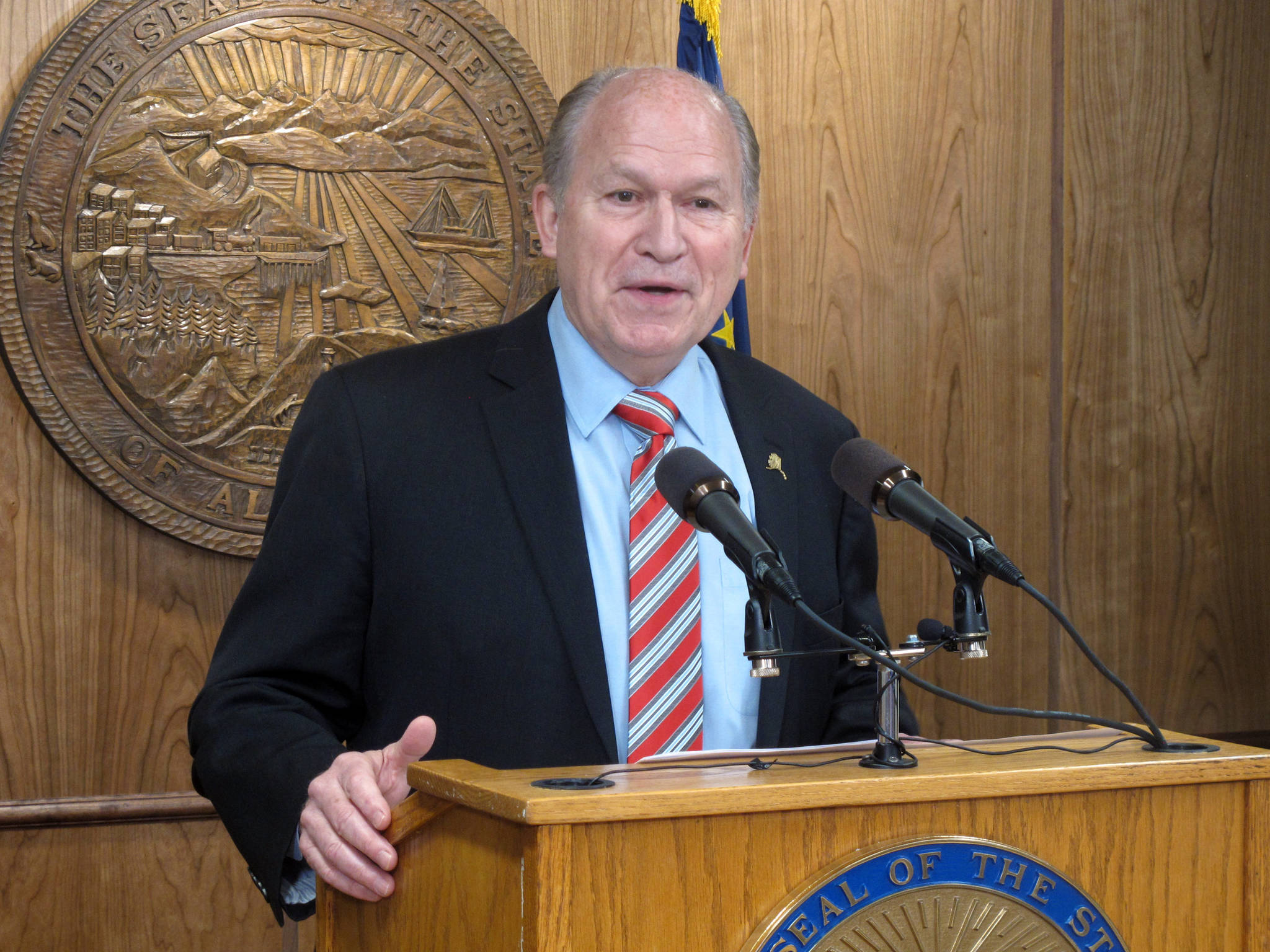ANCHORAGE — The state of Alaska took a major step toward realizing a long-sought pipeline to move natural gas from the North Slope to Asia, siding with interests from China after major oil companies stepped back from the project.
The agreement Alaska Gov. Bill Walker signed Thursday in Beijing with Sinopec, China Investment Corp. and the Bank of China does not guarantee a pipeline will be built, but it gives the lingering liquefied natural gas project a jolt of life.
“This is the market responding, and we’re very, very pleased with that,” Walker told reporters in a teleconference from Beijing.
The agreement was signed as both U.S. President Donald Trump and Chinese President Xi Jinping watched. No financial terms were released, but it’s been estimated that the project could cost $43 billion.
The agreement means all parties will work on various aspects of the project, including marketing and financing with a status check in 2018. The goal, Walker said, is to have definitive contracts signed by the end of 2018. Construction would start the following year, with the goal to have the pipeline operational by 2024 or 2025.
Representatives of Sinopec and the Bank of China toured operations on the North Slope and visited facilities in Anchorage before making their decision, which had to be approved by the Chinese government.
“This has been a long courtship with these folks,” said Keith Meyer, the president of the Alaska Gasline Development Corp., the state-sponsored entity advancing the project.
Negotiations began in May, he said.
In the agreement, Sinopec would be the customer buying the gas, the bank would be the lender for Sinopec and China Investment Corp. would be an investor if there were to be an equity investment in the project. The Alaska corporation would retain majority ownership, Meyer, said.
About 75 percent of the LNG would go to China, with Alaska retaining 25 percent for other regional markets in Asia, including Japan, South Korea and Vietnam.
“I look forward to seeing the details, but at first glance, this joint development agreement is very encouraging for the thousands of Alaskans who never lost hope that a natural gas pipeline could one day become a reality,” Alaska House Speaker Bryce Edgmon, a Democrat, said in a statement. ”A pipeline project will bring jobs, investment, and, perhaps most importantly, a renewed sense of hope that Alaska’s best days are ahead of us, not behind.”
The pipeline as envisioned would rival the famed trans-Alaska oil pipeline, a major building project of a generation ago.
The natural gas pipeline is intended to tap into the rich natural gas reserves on the North Slope. Similar in length to the oil pipeline, it would transport the gas 800 miles (1,287 kilometers) to the coast on the Kenai Peninsula, where it would be liquefied and shipped to Asia.
Such a pipeline has been a dream for Alaskans for years, seen as a way to provide economic certainty as oil production from the North Slope declines.
Estimates have put proven gas reserves on the North Slope overall at 35 trillion cubic feet. Alaska could provide a generation’s worth of liquefied natural gas to China, Walker told the Chinese president when Xi stopped in Anchorage on a layover in April.
Millions have been spent a pipeline project, which has been marred in recent years by changes in direction, waning interest among state legislators and low natural gas prices.
The state took lead on the project with the blessing of major oil companies, who plan to provide gas to the project from their leased North Slope fields but focused priorities elsewhere. Walker has said this would be a make-or-break year for the proposed project, and he’s been working to secure commitments from countries in Asia to buy the gas or be partners in the project.
The state opened an office in Tokyo to help market its gas, and Walker himself has traveled abroad looking for commitments.
This comes on the heels of a June announcement that the state-owned Alaska Gasline Development Corp. signed an agreement with the Korea Gas Corp., establishing a cooperative framework for the development of Alaska’s natural gas infrastructure.
———
Associated Press writer Becky Bohrer contributed to this report from Juneau, Alaska.

